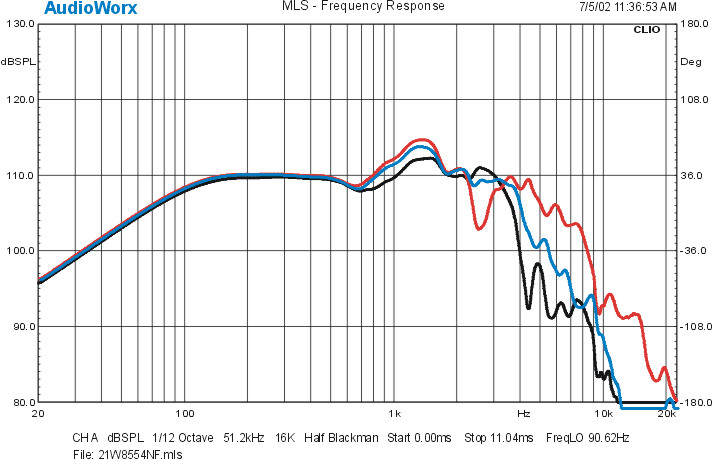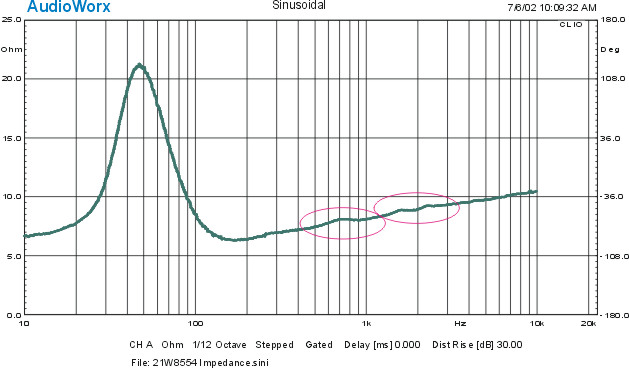I was perusing SL's site and he has a new article on mounting drivers.
This caught my eye:
"The basket-magnet resonance.... Often the resonance can be seen as a small bump in the driver's impedance curve in the few hundred Hz range. It should not be confused with the higher frequency bump due to cone breakup."
Is this the source of the weird impedance glitch we see on so many Scanspeak and other drivers at around 800Hz or so? If so, that requires a paradigm shift (to quote a cliche) in evaluating drivers and what you have to do to make them work. Maybe all those drivers need is a better mounting method rather than XO tweaks, etc.?
This caught my eye:
"The basket-magnet resonance.... Often the resonance can be seen as a small bump in the driver's impedance curve in the few hundred Hz range. It should not be confused with the higher frequency bump due to cone breakup."
Is this the source of the weird impedance glitch we see on so many Scanspeak and other drivers at around 800Hz or so? If so, that requires a paradigm shift (to quote a cliche) in evaluating drivers and what you have to do to make them work. Maybe all those drivers need is a better mounting method rather than XO tweaks, etc.?









Comment